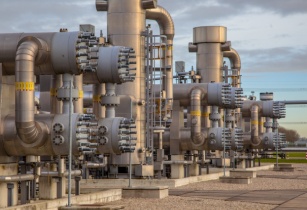In the recent LNG Outlook 2035, Cedigaz, the International Association for Natural Gas, has revealed rebalancing in the global LNG market is not expected before 2024 with the current rise in supply outpacing demand growth
“Demand will struggle to keep up with supply ramp-up at the beginning of the projection period and an over-supply situation should prevail,” said the company in a statement.
In the 2035 LNG Outlook, Cedigaz has estimated that total LNG production capacity from existing and under construction projects is expected to increase from 244 mmtpa in 2015 to 387 mmtpa in 2021.
According to the company, the significant increase in effective liquefaction capacity to 2020-21 would result due to strong growth in Australia and the US until 2019 and 2021 respectively.
After 2021, unless new projects are launched, the company has forecasted gradual decline in production capacity due to the ageing of some facilities in Southeast Asia and growing constraints on resources in Trinidad and Tobago, the UAE, Oman Algeria, Indonesia and Malaysia.
Cedigaz expects a strong penetration of the US projects from 2017, accelerating thereafter to reach 64 mmtpa in 2021, having 16 per cent share of liquefaction in the world.
Apart from the US, LNG production capacity in the other part of the worls is also expected to increase, mainly due to the resumption of production in Angola in 2017, new production in Mozambique (Coral FLNG) and the probable development of Fortuna FLNG in Equatorial Guinea.
“Cedigaz expects that the strongest increases in LNG capacity from post-FID projects will originate from the US, Canada, Mozambique and Qatar,” stated the company.
The traditional markets like Japan, South Korea and Taiwan will remain stable, while emerging markets such as China, India, Malaysia, Pakistan, Singapore and Thailand are expected to grow significantly. Cedigaz has estimated their imports to rise from 41 mmtpa in 2015 to 193 mmtpa in 2035.
“New Asian markets, Bangladesh, Indonesia, the Philippines and Vietnam, will also contribute to the increase of imports from the 2020s, reaching almost 40 mmtpa in 2035,” said Cedigaz.
Asia will maintain its position as the leading LNG import region with a market share of around 70 per cent throughout the projection period.





